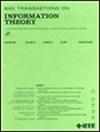最佳线切割与经典通信
IF 2.9
3区 计算机科学
Q3 COMPUTER SCIENCE, INFORMATION SYSTEMS
引用次数: 0
摘要
电路编织是将大的量子电路划分成更小的子电路的过程,这样原始电路的结果可以通过运行子电路来推断。这些技术对于近期和早期的容错量子计算机至关重要,因为有限的量子比特数量可能是展示量子优势的主要瓶颈。在划分电路时,通常区分门切割和线切割。任何电路编织方法的成本在切割次数上都呈指数级增长。实现切割的一种可能性是通过准概率模拟技术。事实上,我们认为所有现有的严格电路编织技术都可以在这个框架中理解。此外,我们描述了线切割的最佳开销,其中子电路可以交换经典信息或不。我们证明了在子电路之间没有经典通信和具有经典通信的情况下切割n条导线的最佳成本分别为$O(16^{n})$和$O(4^{n})$。本文章由计算机程序翻译,如有差异,请以英文原文为准。
Optimal Wire Cutting With Classical Communication
Circuit knitting is the process of partitioning large quantum circuits into smaller subcircuits such that the result of the original circuits can be deduced by only running the subcircuits. Such techniques will be crucial for near-term and early fault-tolerant quantum computers, as the limited number of qubits is likely to be a major bottleneck for demonstrating quantum advantage. One typically distinguishes between gate cuts and wire cuts when partitioning a circuit. The cost for any circuit knitting approach scales exponentially in the number of cuts. One possibility to realize a cut is via the quasiprobability simulation technique. In fact, we argue that all existing rigorous circuit knitting techniques can be understood in this framework. Furthermore, we characterize the optimal overhead for wire cuts where the subcircuits can exchange classical information or not. We show that the optimal cost for cutting n wires without and with classical communication between the subcircuits scales as $O(16^{n})$ and $O(4^{n})$ , respectively.
求助全文
通过发布文献求助,成功后即可免费获取论文全文。
去求助
来源期刊

IEEE Transactions on Information Theory
工程技术-工程:电子与电气
CiteScore
5.70
自引率
20.00%
发文量
514
审稿时长
12 months
期刊介绍:
The IEEE Transactions on Information Theory is a journal that publishes theoretical and experimental papers concerned with the transmission, processing, and utilization of information. The boundaries of acceptable subject matter are intentionally not sharply delimited. Rather, it is hoped that as the focus of research activity changes, a flexible policy will permit this Transactions to follow suit. Current appropriate topics are best reflected by recent Tables of Contents; they are summarized in the titles of editorial areas that appear on the inside front cover.
 求助内容:
求助内容: 应助结果提醒方式:
应助结果提醒方式:


